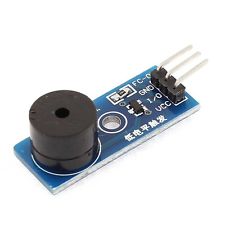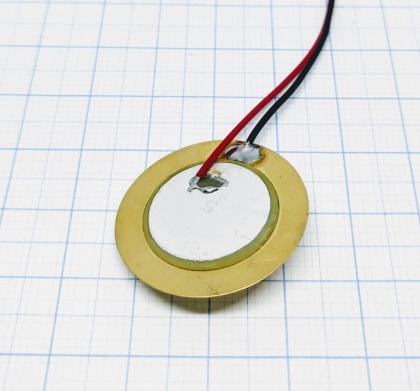Difference between revisions of "Buzzer (RTTTL)"
Grovkillen (talk | contribs) |
Grovkillen (talk | contribs) |
||
| Line 1: | Line 1: | ||
= Introduction = | = Introduction = | ||
| − | RTTTL (Ring Tone Transfer Language) was developed by Nokia to play more "easy on the ear" melodies as ringtones for mobile phones. The tunes over all characteristics are created by using three different commands: | + | RTTTL (Ring Tone [Text] Transfer Language) was developed by Nokia to play more "easy on the ear" melodies as ringtones for mobile phones. The tunes over all characteristics are created by using three different commands: |
* '''d''' - duration | * '''d''' - duration | ||
| Line 39: | Line 39: | ||
To make a boot-sound on startup, create a rule like this: | To make a boot-sound on startup, create a rule like this: | ||
| + | <pre style="color: #0077dd"> | ||
On System#Boot do | On System#Boot do | ||
rtttl,14:d=10,o=6,b=180,c,e,g | rtttl,14:d=10,o=6,b=180,c,e,g | ||
endon | endon | ||
| − | + | </pre> | |
== Tones == | == Tones == | ||
| − | Besides RTTTL it's also possible to '''play a single tone''' on a pin, via a speaker or piezo element: | + | Besides RTTTL it's also possible to '''play a single tone''' on a pin, via a buzzer speaker or piezo element: |
| − | + | <pre style="color: #0077dd"> | |
| + | http://<ESP IP address>/control?cmd=tone,14,1300,200 | ||
| + | </pre> | ||
Plays a 1300 hz tone for 200 ms on gpio-14h | Plays a 1300 hz tone for 200 ms on gpio-14h | ||
Revision as of 20:19, 19 July 2017
Introduction
RTTTL (Ring Tone [Text] Transfer Language) was developed by Nokia to play more "easy on the ear" melodies as ringtones for mobile phones. The tunes over all characteristics are created by using three different commands:
- d - duration
- o - octave
- b - tempo (beat)
After that the actual tune is then created using standard notes (a, b, c, d, e, f, and g), before the note the duration is set, after the note the octave is set:
<duration><note><octave>
To compose a jingle you separate the notes with a comma.
Hardware
You can use a buzzer speaker or a piezo element to play tones.
The wiring is pretty simple, for the buzzer:
For piezo element:
ESP Easy
No device is needed, generally you use rules to activate different notifications, or you send commands to activate them. Below you find more information on how to do this.
Melodies and ringtones
From ESPEasy v2.0.0-dev6 (in the testing plugin set) its also possible to play melodies via [RTTTL]
(don't forget to remove the spaces)
http://<ESP IP address>/control?cmd=rtttl,14:d=8,o=5,b=180,c6,b,c6,p,g,g-,p,f,b,c6,p,d6,p,g,p,c6,b,c6,p,d6,p,f,g,g-,4p,g,f,4d-
This plays a melody on pin 14.
You can also use these from rules. We use it to let our alarm system give feedback to the user via a piezo speaker.
To make a boot-sound on startup, create a rule like this:
On System#Boot do rtttl,14:d=10,o=6,b=180,c,e,g endon
Tones
Besides RTTTL it's also possible to play a single tone on a pin, via a buzzer speaker or piezo element:
http://<ESP IP address>/control?cmd=tone,14,1300,200
Plays a 1300 hz tone for 200 ms on gpio-14h

